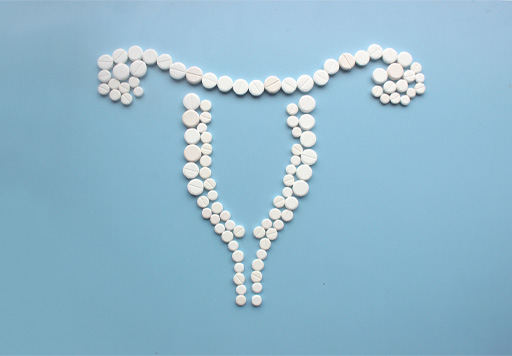1 How do hormonal contraceptives work?
In Activity 1 you will look at the range of hormonal contraceptives that can be used and how they impact on the menstrual cycle. In this video Emma refers to ‘synthetic’ hormones and these are hormones that are artificially created and then introduced into the body, rather than hormones that are naturally produced by the body. All forms of hormonal contraception involve the introduction of synthetic hormones into the body.
Activity 1 It’s about more than a pill
Watch the video below where Dr Emma Ross from The Well HQ [Tip: hold Ctrl and click a link to open it in a new tab. (Hide tip)] introduces different types of hormonal contraception and their impact on the female athlete. Then answer the following questions:
- Why do coaches and trainers need to be more confident when talking about contraception with their athletes?
- What benefit may the Mirena coil have over other methods of oral contraception?

Transcript
Discussion
- Knowing if female athletes are using hormonal contraception can be important for coaches and trainers, since their use can suppress the naturally occurring hormones that control reproduction and create a different physiology within the athlete. Hormonal contraception use may also mask any menstrual problems or disruptions that the athlete is experiencing. While Emma explained two main types of oral contraceptive pill, there are around 12–15 different preparations of the combined pill (containing oestrogen and progesterone) and at least 4 different types of the mini pill (containing progesterone only). These will all contain slightly different amounts of synthetic oestrogen and progesterone and thus will have slightly different effects on the body.
- While most hormonal contraceptives suppress the production of naturally occurring menstrual cycle hormones, the exception is the Mirena coil. In women using this hormonal coil, ovulation and the cyclical release of oestrogen and progesterone can occur, because the delivery of synthetic progesterone is localised directly into the uterus, and it does not circulate more widely around the body. Pregnancy is avoided because the uterus lining remains thin but because the menstrual cycle continues it produces natural peaks and troughs.
You will appreciate that the purpose of hormonal contraceptives is to reduce the risk of pregnancy by preventing ovulation and the development of follicles in the uterus. They also reduce sperm’s ability to swim effectively (motility) and the thickening of the uterus lining. But you may be wondering why introducing more oestrogen and progesterone into the body causes it to stop producing its own hormones and why these synthetic versions do not have the same effect as naturally occurring hormones?
Tricking the brain to sit back and relax – how hormonal contraception works
To understand this you will need to refer back to the menstrual cycle that was covered in Session 2, and the hormonal signals that come from the brain to the ovaries.
Once the egg has been released at ovulation, oestrogen and progesterone are both relatively high during this second half of the cycle (the luteal phase). These high levels of hormones are a signal to the brain to ‘sit back and relax’. What the pill does is trick the brain, every day, into thinking that the body is in the second half of the menstrual cycle, when oestrogen and progesterone remain high. The pill does this by delivering a synthetic version of these hormones. In this way the brain stays in its ‘sit back and relax’ mode through the whole cycle and it does not stimulate ovulation because it thinks it is in the post-ovulatory part of the menstrual cycle.
The primary way the pill prevents pregnancy is by preventing ovulation and as no egg is released it means that the sperm has nothing to fertilise.

